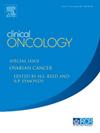治疗决定对老年非小细胞肺癌患者生存结果的影响:一项回顾性现实世界研究
IF 3
3区 医学
Q2 ONCOLOGY
引用次数: 0
摘要
肺癌(LC)是癌症相关死亡的主要原因,特别是在老年患者中,他们通常接受的治疗较少,预后比年轻人差。造成这些差异的原因尚不清楚。本研究旨在确定影响老年非小细胞肺癌(NSCLC)患者治疗决策和生存结果的临床因素。材料和方法:本回顾性研究纳入了2018年在芬兰五家医院诊断的395例非小细胞肺癌患者。患者被分为四个年龄组:80岁。总生存期(OS)分析各年龄组,按治疗方法分层。结果:各年龄组的分期分布相似;而老年患者的运动状态较差,Charlson共病指数(CCI)评分较高(P≤0.008)。老年患者接受手术、放化疗或化疗的可能性较低,获得最佳支持性护理(BSC)的频率较高(P < 0.013)。OS随着年龄的增加而下降(P = 0.006),最年轻和最年长队列的1年生存率分别为60%和32%,2年生存率分别为41%和15%。LC是所有年龄组的主要死亡原因。结论:老年非小细胞肺癌患者的生存结果较差,尽管诊断时疾病分期相似,可能是由于治愈率较低。这些发现强调需要进一步研究优化老年非小细胞肺癌患者的治疗策略。本文章由计算机程序翻译,如有差异,请以英文原文为准。
Impact of Treatment Decisions on Survival Outcomes in Elderly Patients With Non–Small Cell Lung Cancer: A Retrospective Real-World Study
Aims
Lung cancer (LC) is a leading cause of cancer-related mortality, particularly in elderly patients, who often receive less curative treatment and have poorer prognoses than younger individuals. The reasons for these disparities remain unclear. This study aimed to identify clinical factors influencing treatment decisions and survival outcomes in elderly patients with non–small cell lung cancer (NSCLC).
Materials and methods
This retrospective study included 395 NSCLC patients diagnosed in 2018 at five Finnish hospitals. Patients were divided into four age cohorts: <61, 61 to 70, 71 to 80, and >80 years. Overall survival (OS) was analysed across age groups, stratified by treatment methods.
Results
Stage distribution was similar across age groups; however, older patients had worse performance status and higher Charlson Comorbidity Index (CCI) scores (P ≤ 0.008). Elderly patients were less likely to receive surgery, chemoradiotherapy, or chemotherapy and were more frequently offered best supportive care (BSC) (P < 0.013). OS decreased with increasing age (P = 0.006), with 1-year survival rates of 60% and 32% and 2-year survival rates of 41% and 15% in the youngest and oldest cohorts, respectively. LC was the leading cause of death across all age groups.
Conclusion
Elderly NSCLC patients had poorer survival outcomes despite similar disease stage at diagnosis, possibly due to lower rates of curative treatment. These findings highlight the need for further investigation into optimising treatment strategies for elderly patients with NSCLC.
求助全文
通过发布文献求助,成功后即可免费获取论文全文。
去求助
来源期刊

Clinical oncology
医学-肿瘤学
CiteScore
5.20
自引率
8.80%
发文量
332
审稿时长
40 days
期刊介绍:
Clinical Oncology is an International cancer journal covering all aspects of the clinical management of cancer patients, reflecting a multidisciplinary approach to therapy. Papers, editorials and reviews are published on all types of malignant disease embracing, pathology, diagnosis and treatment, including radiotherapy, chemotherapy, surgery, combined modality treatment and palliative care. Research and review papers covering epidemiology, radiobiology, radiation physics, tumour biology, and immunology are also published, together with letters to the editor, case reports and book reviews.
 求助内容:
求助内容: 应助结果提醒方式:
应助结果提醒方式:


